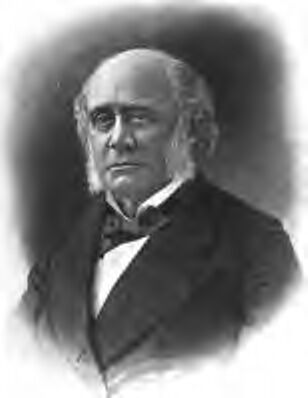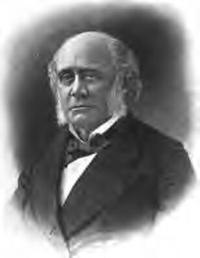IT’S HISTORY
By Carlos N. Olvera
I once asked a new local business employee if they knew who Dana Point was named after: “someone who lived here?”
Close, but no cigar. But thanks to Doris Walker’s book, “Home Port for Romance” we all have access to Dana Point’s history.
When Richard Henry Dana Jr. came here in 1835 he was but a lad of 19. We know when he returned to Boston he compiled his memoirs titled “Two Years before the Mast” in 1840, and wrote that the cliffs of Capistrano Bay made the area “the most romantic spot on the coast.”
But what of the history before and after Dana’s visit?
The first Dana in America was Richard Dana (1617-1690), who landed in New England about 1640. He was among the earliest settlers in Cambridge, Mass. Dana came from Manchester, England, but was loyal to his new land. In 1664, along with several members of the First Church, he signed a petition to the Massachusetts Bay Colony expressing their loyalty and satisfaction. Dana remained active in politics, becoming a constable, a viewer of fences and a surveyor of highways.
Six generations later, in 1815, Richard Henry Dana, Jr. was born in Cambridge, Mary. The third great-grandson of the first Dana in America, Richard Jr.’s life was rooted in service and devotion to his country.
Early in life he was a student of Ralph Waldo Emerson. The younger Richard entered Harvard in 1831, but due to difficulties with his eyes, he withdrew.
After his departure on the brig Pilgrim and his return on the Alert, he re-entered Harvard and graduated in 1837. Richard went on to receive his bachelor of laws in 1839, was admitted to the bar in 1840 and received his doctor of laws from Harvard in 1866. During this time he was highly active in the protection of fugitive slaves, even risking his life and career on their behalf.
He became a U.S. Attorney and during the Civil War, argued before the U.S. Supreme Court in support of naval blockades of southern ports. After the war, he became a member of the Massachusetts legislature, serving from 1867 to 1868. He was nominated as U.S. Ambassador to Great Britain—known then as Minister to the Court of St. James and commonly referred to, at the time, as the English mission—in 1876 by President Ulysses S. Grant.
Dana felt this would be the crowning achievement of his career in public service. However, William Beach Lawrence had a problem with this. He publically accused Dana of plagiarism in his writings during the confirmation hearings, in retaliation to a challenge Dana made of Lawrence’s’ writings in 1863. Further, General Benjamin F. Butler, who suffered defeat during the Civil War, took exception. Butler was a legislator in Massachusetts with lackluster results. Dana, a former legislator himself, challenged Butler in the 1868 election and lost. But the animosity of the two toward Dana remained. The nomination was rejected.

A photo of Richard Henry Dana Jr. Courtesy photo
Dana was the author of eight books and studied and wrote extensively on maritime law. The experience he gained while aboard tall ships gave him great concern over the treatment of sailors—such as walking the plank and flogging at the whim of the captain. In 1882, Dana travelled to Italy to study their laws, where he died from influenza. Dana is buried in the Protestant Cemetery in Rome.
So what was his home life like?
You can imagine the family having dinner guests such as Ralph Waldo Emerson, Henry Wadsworth Longfellow and William Ellery. Ellery was the grandfather to Dana Jr.—on his mother’s side—and a signer of the Declaration of Independence. Longfellow was the father-in-law to Richard Henry Dana III.
Today’s direct descendant of Dana Jr. is Richard Henry Dana VII, who lives in New York.
Also important to California is William Goodwin Dana, a fourth cousin, who settled in the Santa Barbara area. This family continues to live in the Nipomo area. Locally, we have two Dana descendants; both fourth cousins, four times removed, living in Mission Viejo and Laguna Hills.
The promontory of Dana Point was originally called San Juan Point after the location of the mission in San Juan Capistrano. Sometime near the turn of the 19th century, a surveyor plotted the point as Dana’s Point. In the early 1920s, development was started by the Dana’s Point Co. which was shortened to the Dana Point we know today.
You may relive Dana’s journey to California in the third annual reading of “Two Years before the Mast” during the Festival of Whales, staring on Friday March 8, at 1 p.m. The reading runs for three days and ends on Sunday at noon. For more information or to participate in the reading, email twoyearsbeforethemastdp@gmail.com or call 949.248.8121. About 100 volunteers are needed to make this presentation at the Nature Interpretive Center, 34558 Scenic Dr.
Carlos N. Olvera is past president of the Dana Point Historical Society, a current Vice Chair of the OC Historical Commission and a Dana Point Councilman.
In an effort to provide our readers with a wide variety of opinions from our community, the DP Times provides Guest Opinion opportunities in which selected columnists’ opinions are shared. The opinions expressed in these columns are entirely those of the columnist alone and do not reflect those of the DP Times or Picket Fence Media. If you would like to respond to this column, please email us at editor@danapointtimes.com


